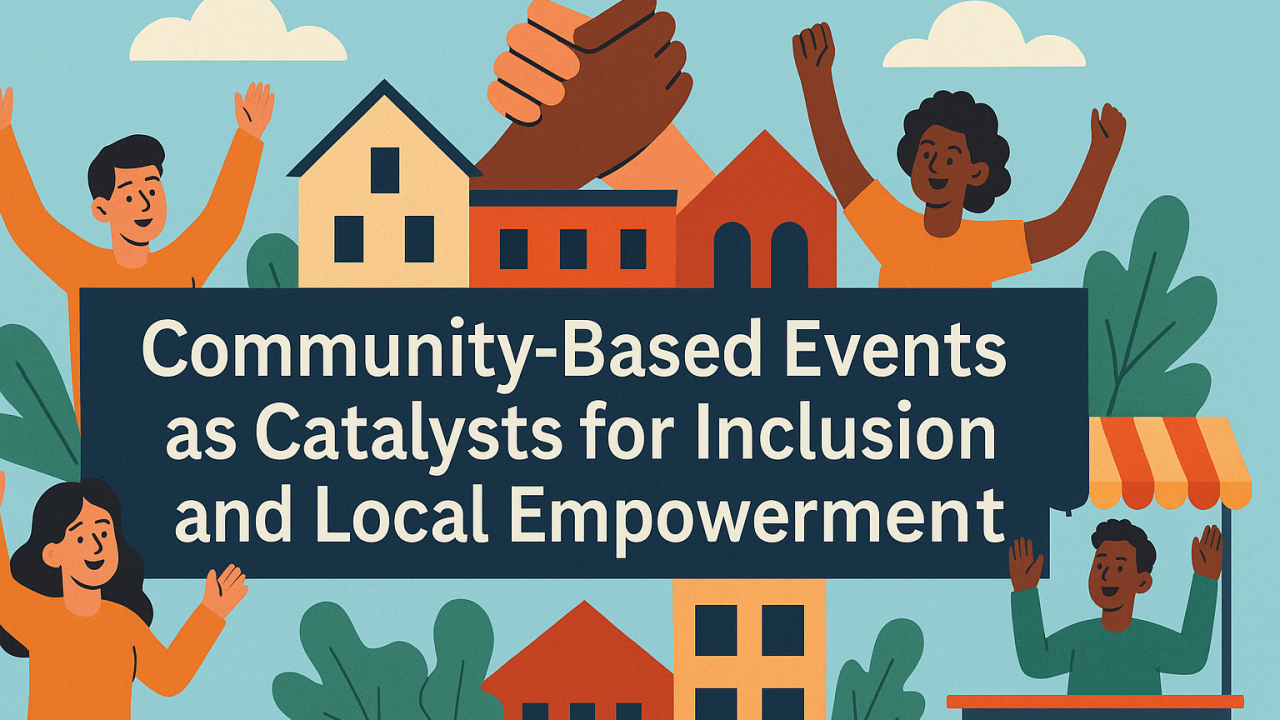Leonardo Cunha
Liderança | Empreendedorismo | Gestão | Planeamento | Estratégia | Escrita para Financiamento | Especialista em financiamento para desenvolvimento | Orador internacional
23 de junho de 2025
In an increasingly fragmented and unequal world, community-based events emerge as powerful instruments for building inclusion, reinforcing local identities, and enabling grassroots empowerment. More than mere celebrations, these initiatives are vital mechanisms through which communities express their histories, assert their presence, and articulate collective futures. In places often labelled as “marginalised” or “underdeveloped”, such events offer a counter-narrative: one of agency, creativity, and solidarity.
Community events—whether cultural festivals, neighbourhood sports tournaments, street art interventions, or storytelling gatherings—play a crucial role in producing what sociologist Anthony Giddens (1991) calls “ontological security”: a sense of continuity and belonging within social life. When communities come together in shared spaces, they reaffirm social bonds and create meaning through rituals, symbols, and shared narratives. These processes are essential for what Stuart Hall (1997) describes as the “construction of cultural identity”, especially in contexts where communities have historically been silenced or overlooked by dominant political and media structures.
Importantly, community-based events are also a platform for empowerment. They provide an arena where local actors can take the lead in shaping the agenda, mobilising resources, and determining the narratives that define them. As Freire (1970) famously stated, true liberation is only possible when individuals become subjects of their own history. In this sense, local events that are co-designed and co-led by community members promote not only participation but ownership—a vital step towards sustainable development.
These initiatives are particularly relevant in urban peripheries and rural territories often described as “zones of exclusion” (Wacquant, 2007). Here, public policies tend to arrive late or insufficiently, and residents often struggle with structural inequalities. Yet, it is precisely within these geographies that the creative and organisational capacity of the community becomes most visible. Events such as community festivals, block parties, local markets, or cultural parades frequently serve as the only remaining spaces where residents can reimagine their environment with pride and hope.
Moreover, these events can become strategic platforms for intersectoral collaboration. Civil society organisations, local businesses, schools, and public authorities often converge in the organisation and support of such gatherings, creating multilevel networks that increase social capital (Putnam, 2000) and enhance the resilience of the local community. As a result, these events move beyond celebration to become vehicles for education, health promotion, economic opportunity, and civic participation.
To maximise their impact, however, community-based events must avoid top-down programming that treats the community as a passive audience. Instead, inclusive planning processes, based on participatory methods and intersectional perspectives, are essential. This includes ensuring the meaningful participation of women, youth, migrants, people with disabilities, and other historically marginalised groups—not only as beneficiaries but as co-creators.
Community-based events are far more than moments of festivity. When structured intentionally, they are fertile grounds for inclusion, identity construction, and local empowerment. In a time when many communities face increasing challenges to their cohesion and visibility, these events offer a unique blend of cultural affirmation and political activation. They remind us that true development starts from the ground up—with people, their stories, and the spaces they claim as their own.
References
Freire, P. (1970). Pedagogy of the Oppressed. New York: Continuum.
Giddens, A. (1991). Modernity and Self-Identity: Self and Society in the Late Modern Age. Stanford University Press.
Hall, S. (1997). Representation: Cultural Representations and Signifying Practices. Sage Publications.
Putnam, R. D. (2000). Bowling Alone: The Collapse and Revival of American Community. Simon & Schuster.
Wacquant, L. (2007). Territories of Utopia: Mythologies of the American Ghetto and the French Urban Periphery. Urban Studies, 44(10), 1981–1991. https://doi.org/10.1080/00420980701471962


